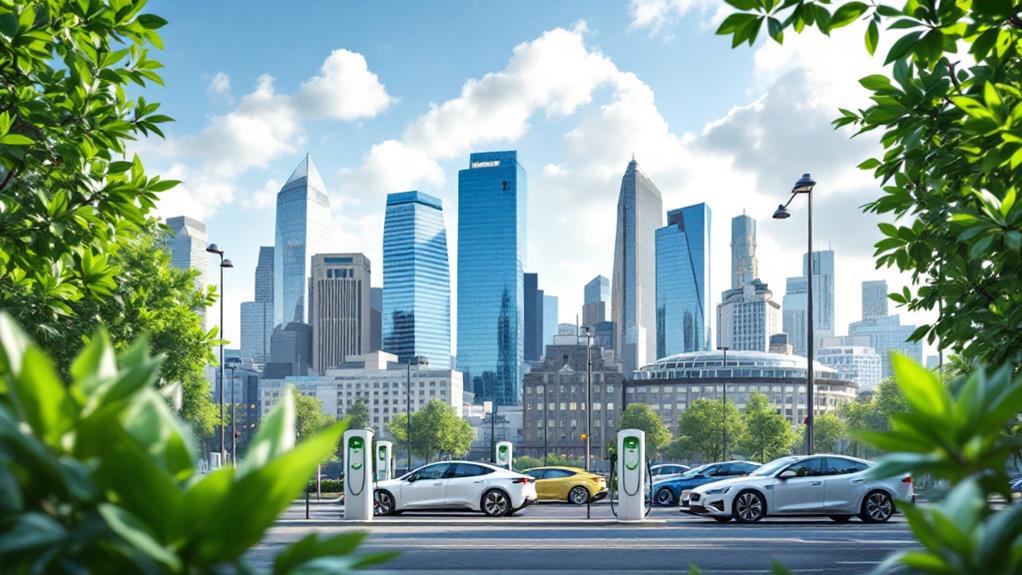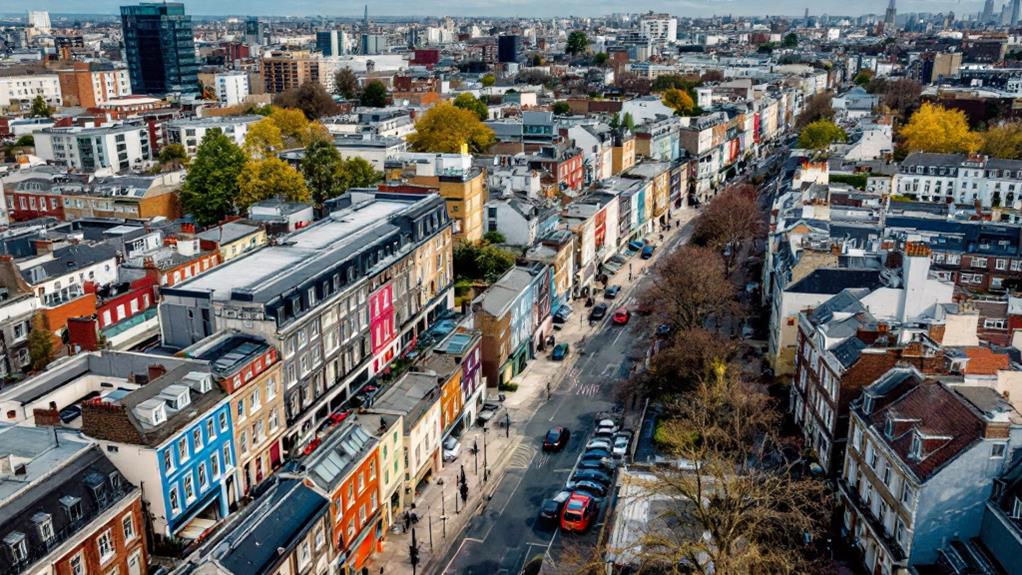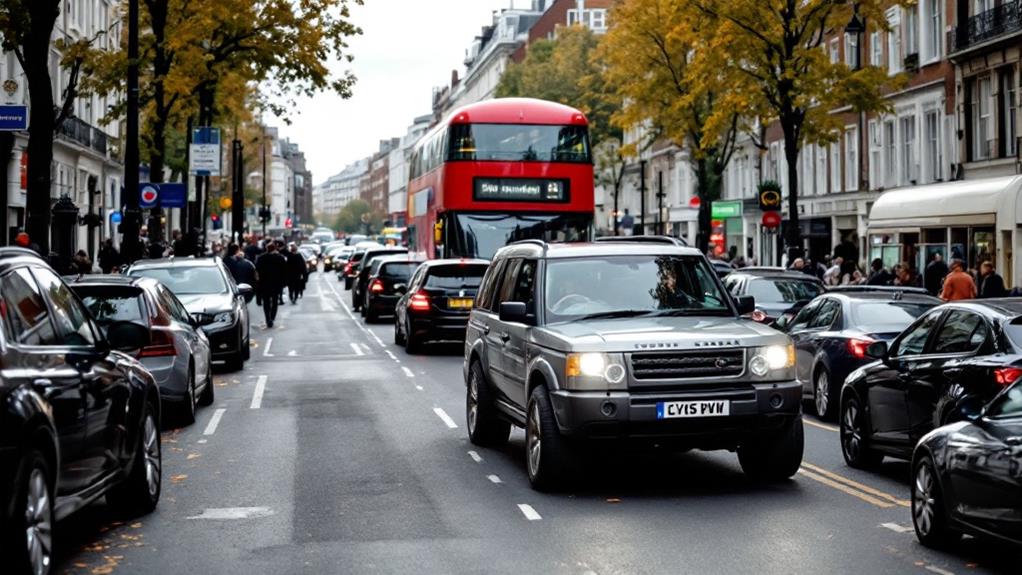Parking Challenges in London's Residential Zones

When parking in London's residential zones, you'll face a labyrinth of challenges. Each borough has its own permit system, with costs varying based on location and vehicle emissions. Visitors must traverse complex regulations and obtain specific permits. Strict time limits and enforcement measures aim to balance residents' needs with visitor access. Limited space in popular areas creates fierce competition for spots. Electric vehicle owners struggle with insufficient charging infrastructure. These parking issues profoundly impact local communities, affecting everything from air quality to pedestrian safety. Understanding the intricacies of London's residential parking landscape is essential for a stress-free experience.
Understanding Residential Parking Permits
Traversing London's residential parking system can be a complex task for residents and visitors alike. With 32 boroughs each implementing their own parking policy, you'll need to familiarize yourself with the specific rules in your area. Residential parking permits are the key to securing parking spaces in controlled parking zones across the city.
If you're a resident, you'll likely need to apply for a permit to park on the street near your home. These permits allow you to park within designated zones, but be aware that time limits and charges may apply. The cost of your permit can vary drastically, ranging from £40 to £150 annually, depending on factors like your borough and vehicle emissions.
For visitors, you'll need to obtain visitor parking permits, which are typically available for daily or hourly fees. This allows you to park in residential areas without risking a penalty. Remember, failing to display a valid permit can result in hefty fines, ranging from £40 to £130. To avoid these charges, always have the correct permit prominently displayed in your vehicle when parking in London's residential zones or car parks.
Visitor Parking Regulations
Guests venturing into London's residential areas face a maze of parking regulations. As a visitor, you'll need to navigate the intricacies of each borough's unique parking rules to avoid hefty fines. Many residential zones in London enforce controlled parking zones or time limits, requiring you to obtain specific visitor permits or use pay-and-display spaces.
Each borough has its own system for visitor parking. You may need to apply for permits in advance, with restrictions on duration and quantity. Some areas offer visitor vouchers or daily scratch cards for short-term stays, while others provide dedicated visitor bays. It's imperative to research the specific regulations of the borough you're visiting before arrival.
Pay close attention to signage indicating parking zones and time restrictions. If you're unsure, look for pay-and-display machines nearby or contact the local council for guidance. Remember that parking rules can change between streets, so always double-check before leaving your vehicle. By familiarizing yourself with London's visitor parking regulations, you'll guarantee a smoother experience and avoid unexpected penalties during your stay in the city's residential neighborhoods.
Time Restrictions and Enforcement
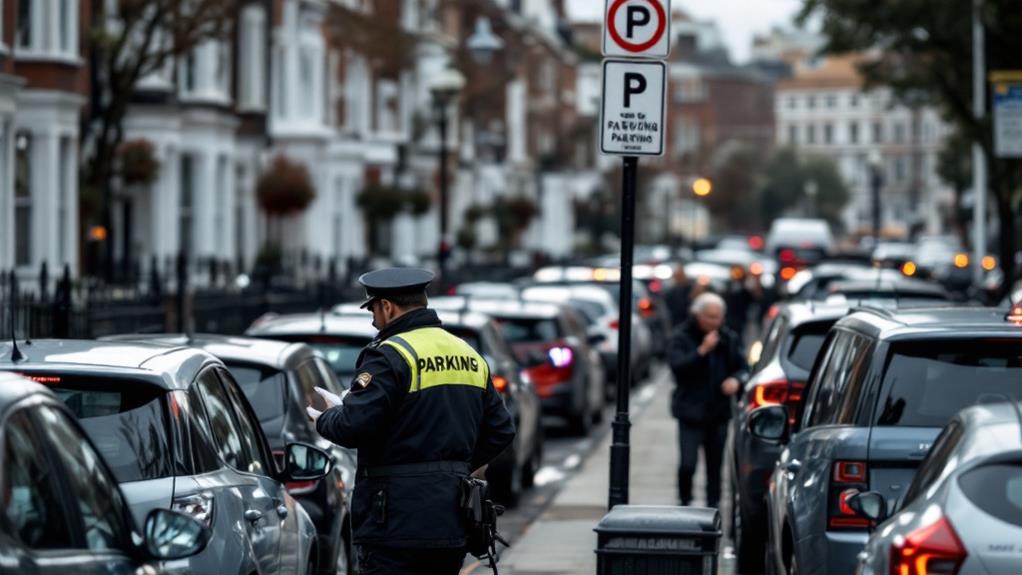
The clock ticks ceaselessly in London's residential zones, where time restrictions on parking are strictly enforced. You'll find that many London boroughs have implemented controlled parking zones to prevent all-day commuter parking and guarantee public use of available spaces. These parking policies are designed to create a balance between residents' needs and visitors' access.
To enforce these time restrictions, local authorities employ various measures:
- Parking wardens patrol the streets
- CCTV cameras monitor parking areas
- Parking meters track duration of stay
- Mobile apps provide real-time enforcement data
You'll need to be vigilant about adhering to these time limits, as enforcement is rigorous. The consequences of overstaying can be costly, with fines acting as a deterrent against illegal parking. This system not only discourages long-term vehicle storage on residential streets but also promotes turnover of spaces.
Limited Space in Popular Areas
Squeezed between Victorian terraces and modern apartment blocks, parking spaces in London's popular residential areas are at a premium. You'll find that the challenge of parking your car within these neighborhoods is exacerbated by high population density and limited off-street options. The competition for on-street parking is fierce, with residents often vying for spots against commuters and visitors.
As you traverse these crowded streets, you'll notice that public space is increasingly consumed by parked vehicles. This not only affects the aesthetic appeal of neighborhoods but also contributes to air pollution as drivers circle endlessly in search of a spot. Local councils are wrestling with the task of implementing effective parking policies to address these issues.
To alleviate the strain, you might consider alternatives like public transport or car-sharing schemes. However, for many residents, owning a car remains a necessity. The limited availability of parking within popular areas highlights the need for innovative solutions that balance the demands of car owners with the broader goals of urban planning and environmental sustainability.
Electric Vehicle Charging Considerations
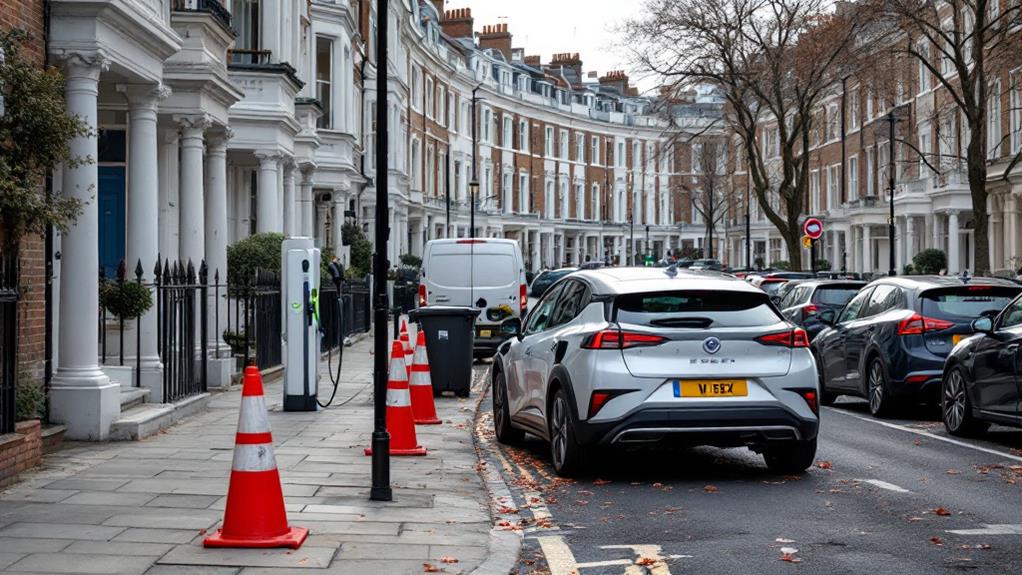
As London grapples with limited parking spaces, a new challenge emerges: accommodating electric vehicles (EVs) in residential areas. You'll find that many boroughs lack sufficient on-street charging infrastructure, creating barriers for residents without private off-street parking. This shortage is particularly evident in controlled parking zones, where permit-holder parking often takes precedence over public EV charging points.
Local authorities face technical and financial obstructions when retrofitting EV charging at scale in existing residential areas. However, integrating charging infrastructure into residential parking policy is vital for supporting the transition to zero-emission vehicles. You'll notice variation across London boroughs in EV charging provision, with some leading the way while others lag behind.
To address these challenges, consider the following:
- Revise public use policies to prioritize EV charging in residential areas
- Encourage collaboration between local authorities and private sector partners
- Investigate innovative solutions for on-street charging, such as lamp post chargers
- Develop a thorough strategy to balance residential parking needs with EV infrastructure
Impact on Local Communities
Beyond the immediate parking challenges, residential zones in London face broader community impacts due to parking pressures. You'll find that unrestricted parking in these areas often leads to commuter parking, reducing availability for residents and visitors. This issue is particularly prevalent in central London parking zones, where space is at a premium.
Limited parking spaces in high-density areas can create conflicts among neighbors, nurturing resentment and tension within communities. Moreover, excessive on-street parking can obstruct pedestrian and emergency vehicle access, compromising safety and accessibility for all.
London councils are grappling tackling the environmental consequences of poorly managed residential parking. It's exacerbating air pollution and noise levels, negatively impacting local communities. To address these issues, using parking policy as a tool for change is essential crucial. Public use policy that encourages sustainable transport modes and discourages reliance on private vehicles is one approach to make parking more manageable.
Implementing effective car use regulations and parking management strategies is essential. By doing so, you'll not only alleviate parking pressures but also enhance the overall quality of life in London's residential zones.
